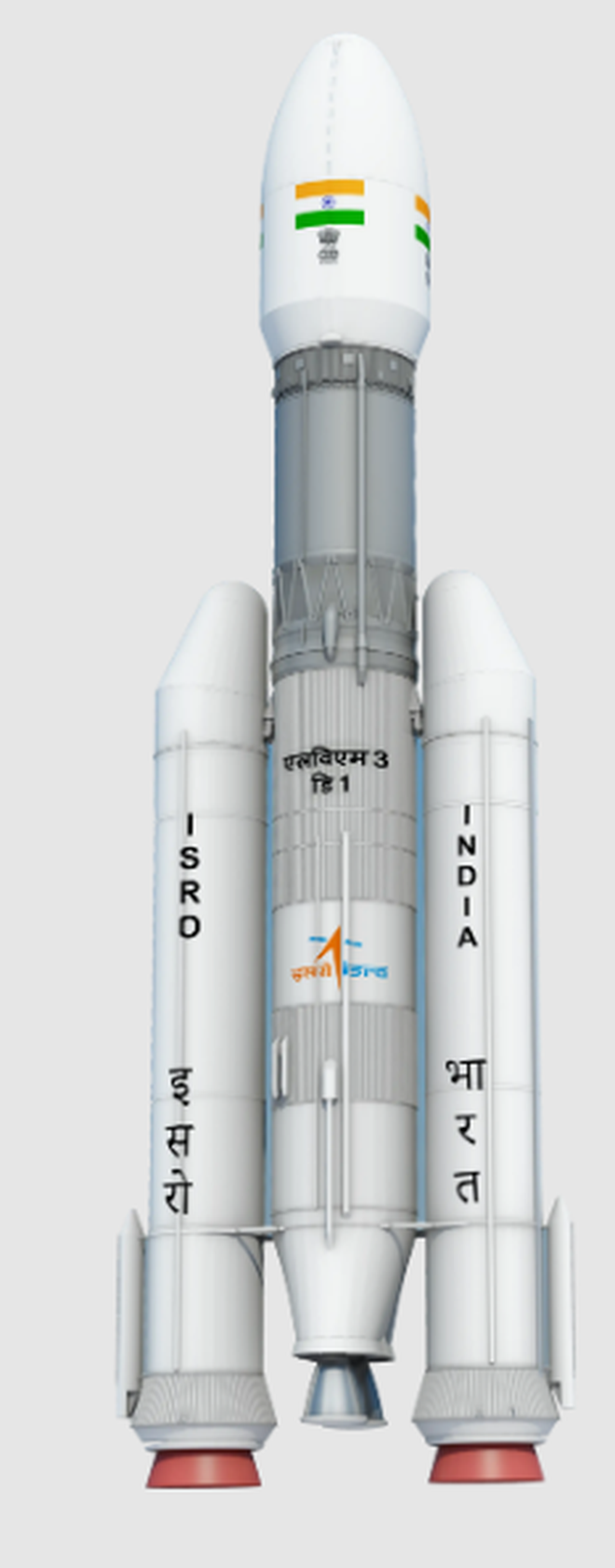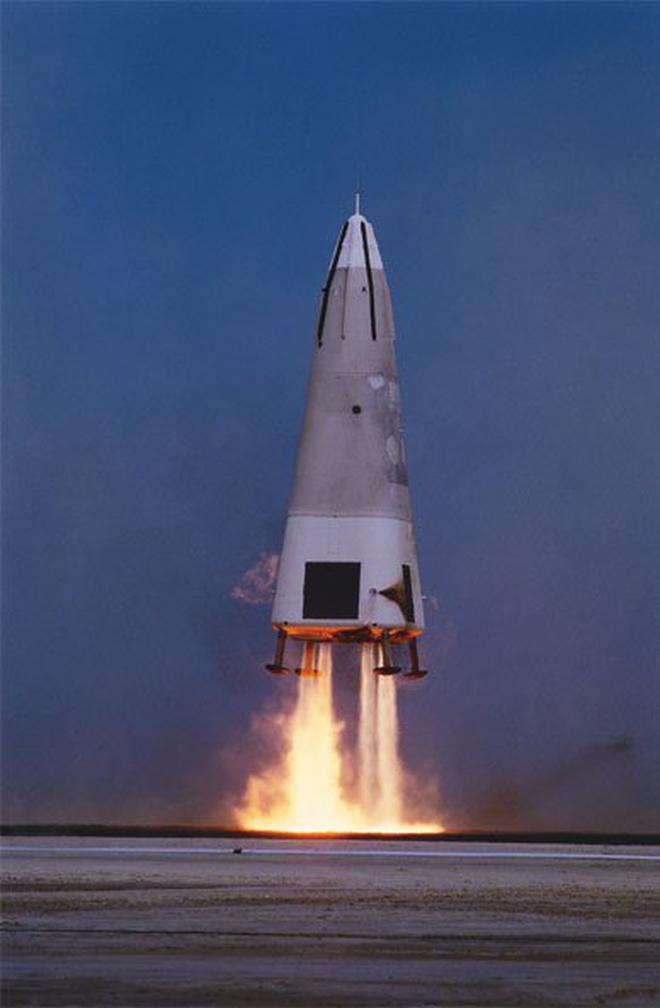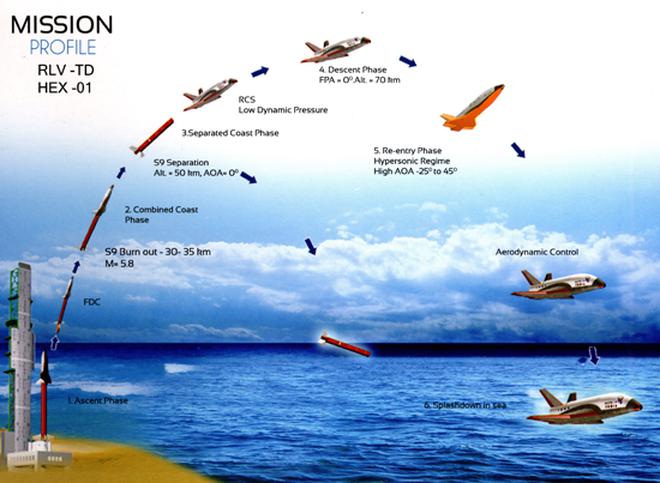Inching closer to a fully reusable launch vehicle, the Indian Space Research Organisation (ISRO) successfully carried out the landing experiment of the Reusable Launch Vehicle-Technology Demonstration (RLV-TD) programme on April 2, 2023.
ISRO executed the landing experiment at the Aeronautical Test Range in Challakere, Chitradurga. The RLV was dropped by an Indian Air Force (IAF) Chinook helicopter from an altitude of 4.5 km. The vehicle performed approach and landing manoeuvres on the runway autonomously, under the conditions in which a re-entry vehicle from space might return — at high speed and without human inputs, to achieve a stable landing.
The success of this test marks yet another milestone in ISRO’s mission to develop a fully reusable launch vehicle as part of its vision to enable low-cost access to space.
Currently, ISRO has three active launch vehicles: the Polar Satellite Launch Vehicle (PSLV), the Geosynchronous Satellite Launch Vehicle (GSLV), and the Launch Vehicle Mark-III (LVM3). The PSLV has four stages while the GSLVs have three stages each. Each stage has a different fuel, and is jettisoned when the fuel is expended as the rocket ascends.
What is a reusable launch vehicle?
Primarily, launch vehicles comprise three or four stages apart from the payload, which needs to be launched into a polar or a geosynchronous orbit, depending on a mission’s requirements. In ISRO’s three-stage rockets, the first — or lowermost— stage has a motor fuelled by solid fuel (in the GSLV, this can also be augmented by up to four liquid strap-on boosters); the second stage has the Vikas engine powered by liquid fuel; and the third and uppermost stage has a cryogenic engine, which uses liquid oxygen and liquid hydrogen.

In the four-stage PSLV, the first stage has a motor using solid fuel (augmentable with up to six solid-fuel strap-on boosters), the second stage has a Vikas engine, the third stage again has a solid-fuel motor, and the fourth stage has two liquid engines.
The RLV that ISRO is building has only two stages to propel the vehicle into orbit. Once the fuel in the first stage has been expended, the vehicle will shed it, and carry on with the second stage. Once it has been shed, the first stage will re-enter the atmosphere and land in an autonomous fashion at a pre-determined location. After some maintenance, it will be available for reuse.
Have RLVs been used in the past?
Since the 1960s, experts have conceived reusable rockets as a way to lower the cost of space missions. In the most idealised version, they imagined a single-stage-to-orbit rocket that could take off and land vertically.
The American aerospace manufacturing company McDonnell Douglas realised this dream in 1993, building the Delta Clipper (DC-X) to demonstrate lift-off, maintain altitude, and a landing on its tail. The project was later transferred to NASA’s Reusable Launch Vehicle program after the cost of each test flight proved to be too expensive. In its twelfth flight in 1996, the DC-X crashed and burned on landing, extensively damaging its exterior chassis.
NASA later shelved the project due to budgetary constraints, bringing this chapter of the single-stage to-orbit launch vehicle to an end.

What reusable technologies are currently in play in spaceflight?
Several DC-X engineers subsequently moved to Amazon founder Jeff Bezos’s space company Blue Origin. On November 23, 2015, Blue Origin’s reusable space vehicle ‘New Shepherd’ successfully undertook a suborbital flight, reaching an altitude of 329,839 feet, and then performed a controlled landing back at its launch site in West Texas with the help of a parachute drop.
Perhaps the most famous player in the reusable spaceflight sector is is Elon Musk’s SpaceX, founded in 2001. Both Blue Origin and SpaceX, among others, are developing rockets with reusable parts, especially the first stage, rather than the whole vehicle being reusable.
SpaceX initially attempted to salvage the rocket’s first stage using parachutes; but the boosters would break before the parachutes were deployed.
Then came the Falcon 9 in 2010, a 54-metre-tall two-stage rocket with nine engines, capable of transporting cargo and crew to the International Space Station (ISS). Instead of using parachutes to recover the first stage, the Falcon 9 was equipped with retrograde thrusters, using which the first stage could come back down to a designated spot using its engines themselves.
Initially, Falcon 9 attempted soft landings in the ocean as they did not have a landing site. After several failures, on its 20th attempt, a Falcon 9 was launched with a light payload to the ISS. Ten minutes after launch, the first stage — its duty done — turned back down and descended smoothly at a landing pad at Cape Canaveral.
Thus far (May 19, 2023), Falcon 9 first stages have had 220 launches, 178 landings and 155 re-flights.
In addition to these companies, the Japan Aerospace Exploration Agency (JAXA), the United Launch Alliance (ULA), the European Space Agency (ESA), and ISRO have also been undertaking R&D on other aspects of reusable launch systems.
What is ISRO working on?
In 2010, ISRO began developing a winged reusable rocket, taking the first step towards realising a two-stage-to-orbit (TSTO) launch vehicle that could be fully reusable. On May 23, 2016, the winged vehicle successfully flew at hypersonic speed. It also withstood fiery re-entry temperatures as it re-entered, qualifying its thermal protection systems, before it touched down at a pre-determined site 425 km east of Sriharikota, in the Bay of Bengal.

While several other related technologies have been tested through the years, ISRO’s RLV’s autonomous landing was only tested successfullyon April 2, 2023.
Currently, ISRO is working on the ‘Orbital Re-entry Experiment’ (ORE), which will be taken to orbit by a modified launch vehicle comprising existing GSLV and PSLV stages. The vehicle will stay in orbit for a stipulated period, re-enter, and finally land autonomously on a runway, with landing gear.







